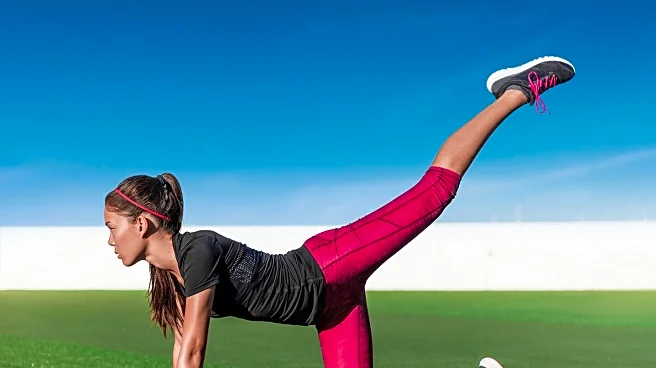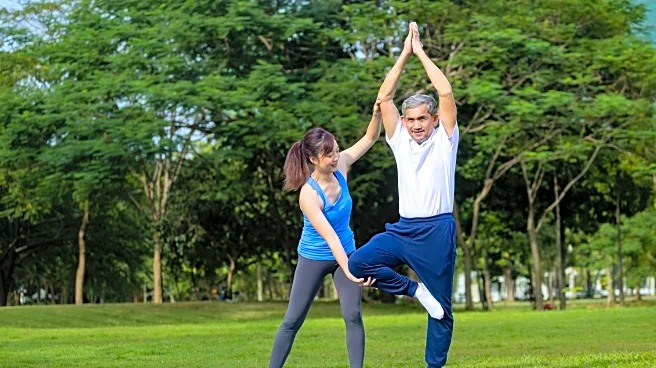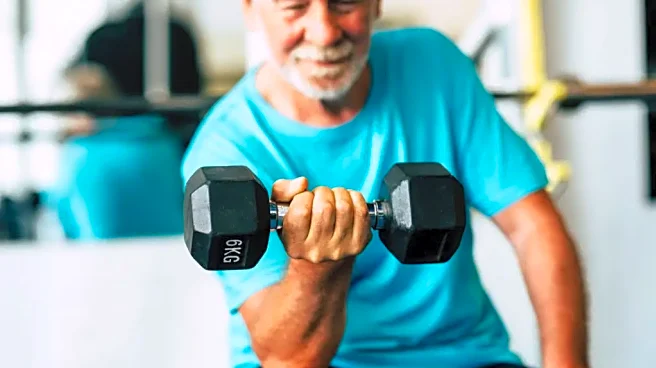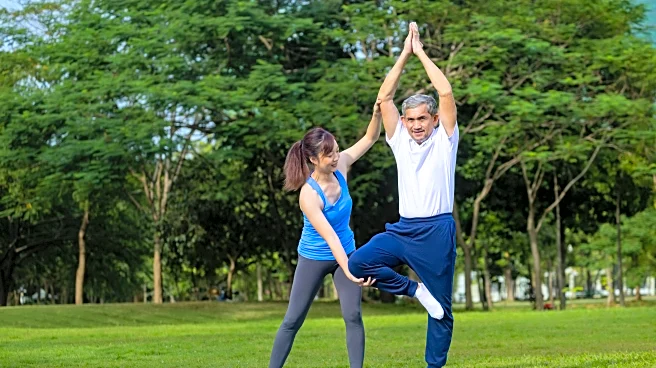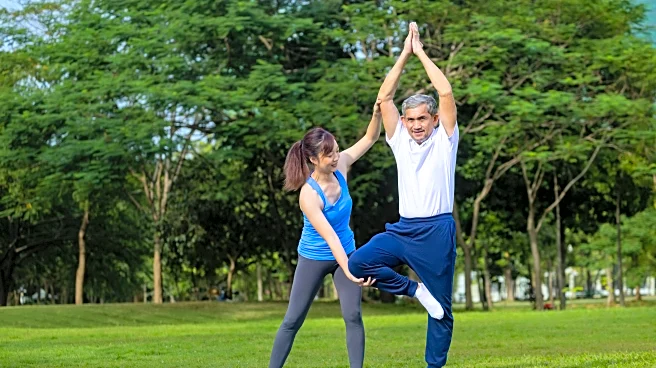What's Happening?
Joshua King, a personal training leader at Life Time Gainesville, emphasizes the significance of maintaining lower-body strength as individuals age, particularly through the exercise of squats. King suggests
that performing 50 consecutive bodyweight squats with controlled technique is a solid benchmark for assessing fitness in individuals over 50. This exercise is noted for its ability to improve balance, coordination, and lower-body strength, which are crucial for daily activities such as walking, sitting, and climbing stairs. King advises mastering proper form and range of motion before progressing to more challenging variations, such as adding resistance or increasing volume.
Why It's Important?
The ability to perform squats effectively is linked to enhanced lower-body strength, cardiovascular efficiency, joint mobility, and overall stability. As people age, maintaining strength in the lower extremities becomes increasingly important to prevent falls and ensure smooth movement patterns. Squat endurance trains the hips, core, and leg muscles to work together under fatigue, which is essential for balance and fall prevention. This coordinated strength supports joint alignment and protects the spine, contributing to a higher quality of life and independence in older adults.
What's Next?
Individuals over 50 are encouraged to incorporate squats into their regular fitness routines, starting with supported squats and gradually progressing to bodyweight squats with controlled movement. As proficiency increases, they can introduce light external resistance, such as kettlebells or dumbbells, to further enhance their strength and endurance. Fitness professionals may continue to advocate for exercises that promote functional capacity and prevent age-related decline in physical abilities.
Beyond the Headlines
The focus on squat endurance highlights broader discussions about aging and fitness, emphasizing the importance of maintaining physical activity to support longevity and health. This approach aligns with public health initiatives aimed at reducing the risk of chronic diseases and enhancing life expectancy through regular exercise.



